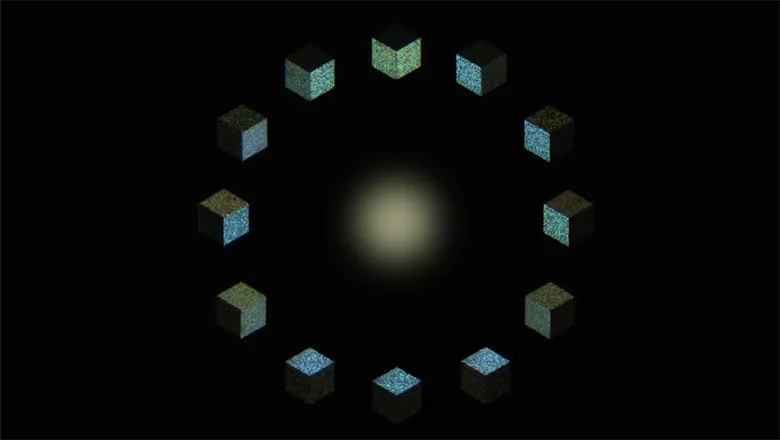Metasurfaces are extremely versatile and are an excellent solution to control and manipulate light with an incredible degree of precision, enabling progress in many different areas of science, either introducing new functionalities or making existing technology smaller and lighter. One might even imagine designing such a metasurface for decorative purposes.
12 May 2020
King's physicists generate 3-dimensional colour images with 2-dimensional nanostructured surfaces
As part of an international collaboration with a research group from Southern University of Science and Technology in Shenzhen (China), researchers from the Department of Physics have demonstrated the projection of colour 3D images using 2D nanostructured surfaces, called metasurfaces, that have potential to become the next generation security feature for anti-counterfeiting applications.

Building on their expertise in design and characterisation of plasmonic nanostructures with tailored optical properties, Professor Anatoly Zayats (Head of the King’s Photonics & Nanotechnology group), Dr Diane Roth (Research Associate), Dr Alexander Minovich (former The Royal Society Newton International Fellow at King’s) and colleagues in China have developed a 2D layered nanostructure, capable of reflecting white light in a controlled direction, which is different from the direction of the conventional mirror reflection.
With the ability to manipulate the light reflection in a very precise way, the researchers trick the eye to perceive a 2D structure as a real 3D object. In their study, the research team encoded an image of a 3D cube onto the metasurface as a proof of concept. The projected image of the cube reacts to variations in the direction of illumination or viewing angle to produce an appropriate change in the brightness of the cube faces. Unlike typical holograms, metasurfaces manipulate the reflection of all colours of light simultaneously, so they appear as a realistic 3D object in any light condition and from any angle of observation.
Demonstrated in the video above, the metasurface is illuminated from a fixed direction (on the right) and the metasurface is rotating in front of the light source, displaying lighting and shading effects and therefore emulating the behaviour of a real 3D cube.
Not only useful for anti-counterfeiting applications, the unique properties of these metasurfaces could also have an impact on the development of new display technology and integrated flat optical components in devices.
Dr Diane Roth commented,
Results from this international project have been published in the American Chemical Society journal Nano Letters.

